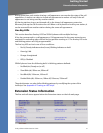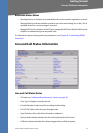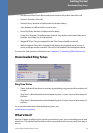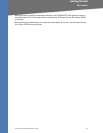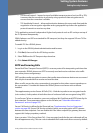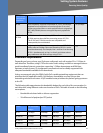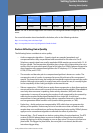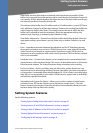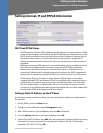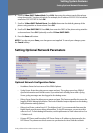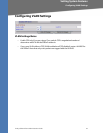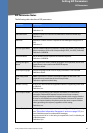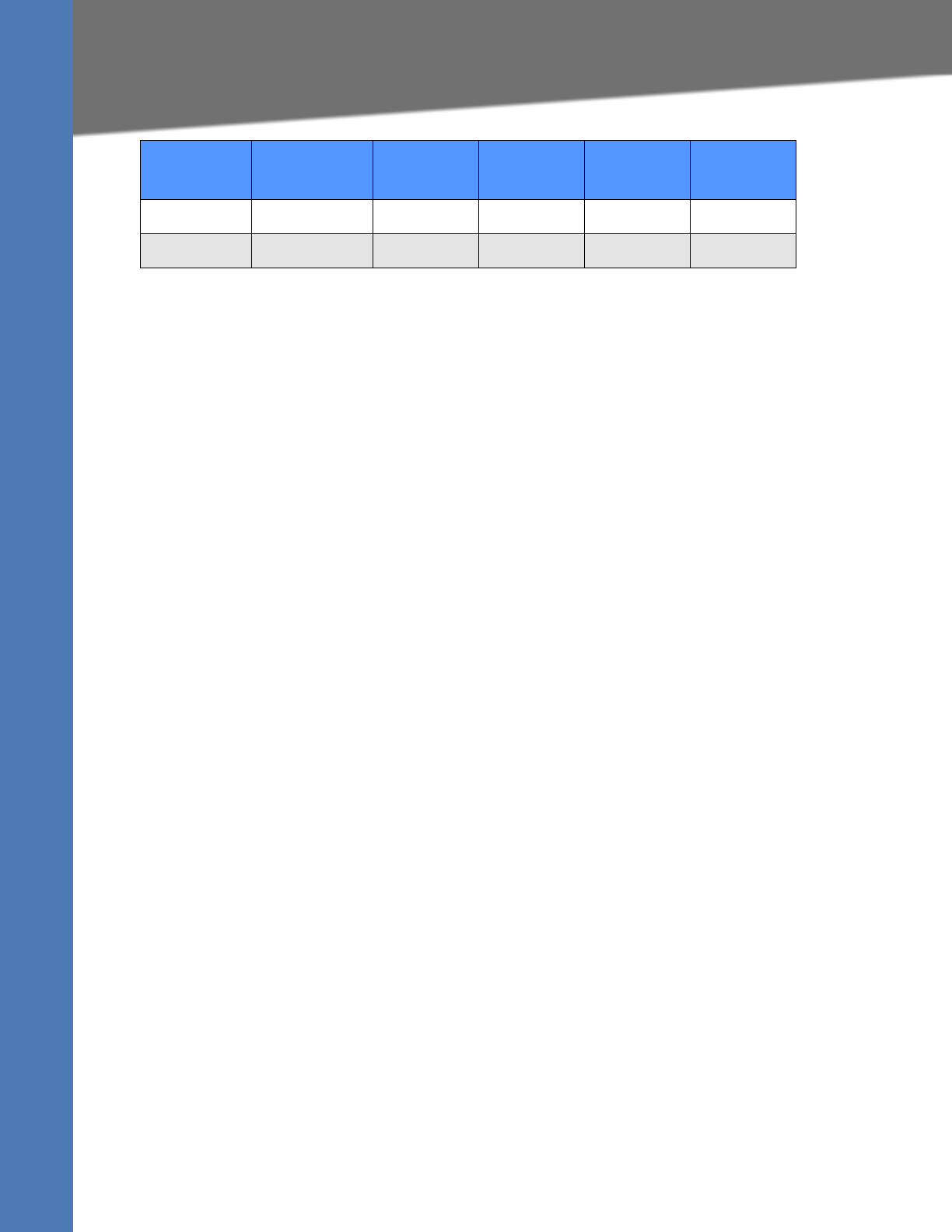
Linksys SPA9x2 Phone Administration Guide 39
Ensuring Voice Quality
Setting System Features
NOTE: The use of silence suppression can reduce the average bandwidth budget by 30% or
more.
For more information about bandwidth calculation, refer to the following websites:
http://www.erlang.com/calculator/lipb/
http://www.packetizer.com/voip/diagnostics/bandcalc.html
Factors Affecting Voice Quality
The following factors contribute to voice quality:
• Audio compression algorithm—Speech signals are sampled, quantized, and
compressed before they are packetized and transmitted to the other end. For IP
Telephony, speech signals are usually sampled at 8000 samples per second with 12–16
bits per sample. The compression algorithm plays a large role in determining the voice
quality of the reconstructed speech signal at the other end. SPA9x2 phones support the
most popular audio compression algorithms for IP Telephony: G.711 a-law and u-law,
G.726, G.729a, and G.723.1.
• The encoder and decoder pair in a compression algorithm is known as a codec. The
compression ratio of a codec is expressed in terms of the bit rate of the compressed
speech. The lower the bit rate, the smaller the bandwidth required to transmit the audio
packets. Although voice quality is usually lower with a lower bit rate, it is usually higher
as the complexity of the codec gets higher at the same bit rate.
• Silence suppression—SPA9x2 phones apply silence suppression so that silence packets
are not sent to the other end to conserve more transmission bandwidth. IP bandwidth is
used only when someone is speaking. Voice activity detection (VAD) with silence
suppression is a means of increasing the number of calls supported by the network by
reducing the required bidirectional bandwidth for a single call. A noise level
measurement is sent periodically during silence suppressed intervals so that the other
end can generate artificial comfort noise (comfort noise generator, or CNG).
• Packet loss—Audio packets are transported by UDP, which does not guarantee the
delivery of the packets. Packets may be lost or contain errors that can lead to audio
sample drop-outs and distortions and lower the perceived voice quality. SPA9x2 phones
apply an error concealment algorithm to alleviate the effect of packet loss.
• Network jitter—The IP network can induce varying delay of received packets. The RTP
receiver in SPA9x2 phones keeps a reserve of samples to absorb the network jitter,
instead of playing out all the samples as soon as they arrive. This reserve is known as a
jitter buffer. The bigger the jitter buffer, the more jitter it can absorb, but this also
introduces bigger delay.
G.726-16 63 kbps 126 kbps 252 kbps 378 kbps 504 kbps
G.729 55 kbps 110 kbps 220 kbps 330 kbps 440 kbps
Codec
Est. Bandwidth
Budget
2 Calls 4 Calls 6 Calls 8 Calls



